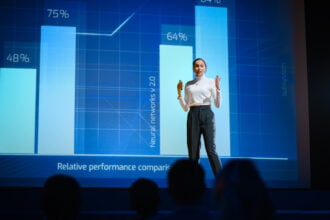The “measured life” of tracking health vital signs, calorie intakes, feces analysis and more is moving past the domain of scientists and onto the professional fields of NFL football and the 2012 Olympics. Data capture, tracking and analysis is taking precedence over “old school” ways of preparing for excellence. Will these new data driven approaches create a whole new breed of champions?
The “measured life” of tracking health vital signs, calorie intakes, feces analysis and more is moving past the domain of scientists and onto the professional fields of NFL football and the 2012 Olympics. Data capture, tracking and analysis is taking precedence over “old school” ways of preparing for excellence. Will these new data driven approaches create a whole new breed of champions?
For the 2012 NFL football season, the Denver Broncos released their former strength and conditioning coach and hired Luke Richesson. Mr. Richesson comes to the Broncos from the Jacksonville Jaguars and has a different mentality for getting the best performance from his athletes.
According to an article in the Denver Post, gone are most of the dumbbells and free weights in the Denver Broncos training facility. Now Richesson focuses on resistance training, mixed martial arts, agility drills and heavy conditioning. But Richesson knows that a new approach to strength and conditioning can only take his athletes so far. Data collection and analysis has to be part of the mix.
“These guys are like Ferrari’s”, Richesson says. And Richesson knows that while it’s ultimately the player’s responsibility to be in the best shape possible, he can provide input and guidance along the way towards ensuring maximum output on the football field.
It starts with data collection. Inputs are taken verbally and documented with iPads. Richesson wants to know what athletes eat for breakfast, lunch and dinner. He documents their sleep quality and quantity. And he has outfitted all players with heart monitors during workouts. Richesson’s staff then uses this data to monitor a player’s workout on a real time basis. And of course, data aren’t discarded afterwards, but stored on a server for future analysis.
“The numbers don’t lie,” Richesson says. He’s constantly looking for peaks, valleys and outliers in the data. When his staff discovers the slightest variance from baseline data, Richesson and his staff start questioning athletes as to changes in diet, sleep schedules or possibly injuries. In effect, everything is monitored, recorded and analyzed, with the ultimate goal of creating a high performance team.
Many 2012 Olympians have a similar idea. Some are accepting use of high tech gadgets on a trial basis in exchange for providing their personal performance data. For example, the Daily Mail notes the US track cycling team is “testing a sleep monitor, glucose monitor…and (is receiving) genetic reports on their nutritional needs and muscular capacity.” While these are “trials” in 2012, it’s highly likely that such data collection and reporting will be commonplace in the near future.
Consistent performance and finishing strong matters for both athletes—and corporate decision makers. It’s good to see that both groups are starting to take analytics seriously in an effort to get a competitive edge.








